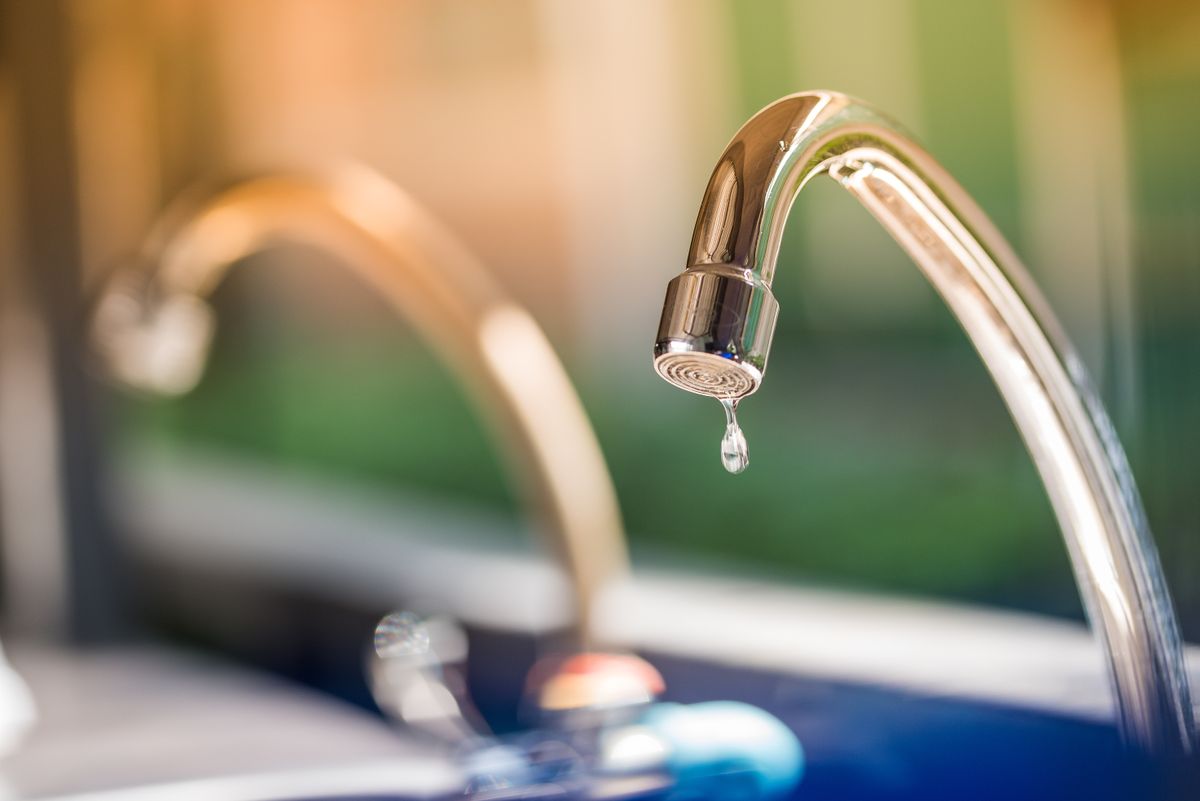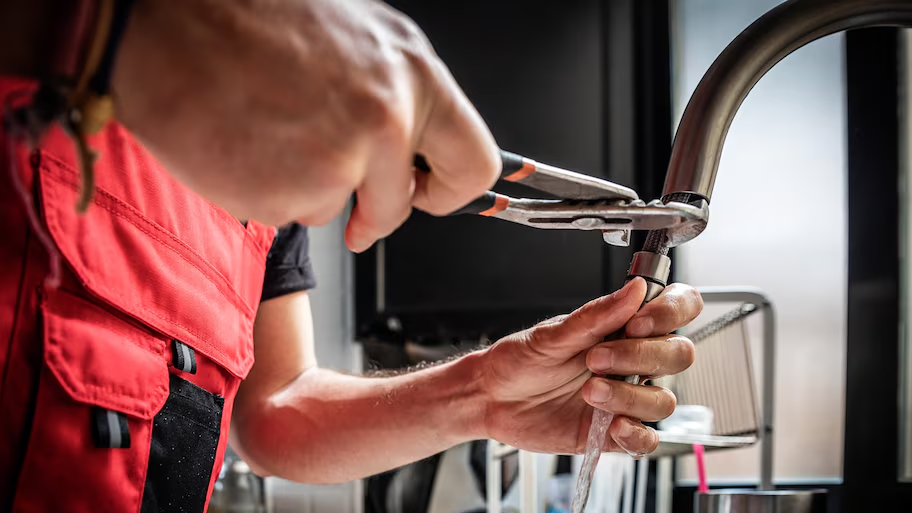We have come across the article relating to Water Dripping from Faucet: Why and How to Fix below on the web and thought it made good sense to share it with you on this site.

Trickling faucets could look like a minor inconvenience, but their impact surpasses simply the nuisance of the noise. From wasting water to sustaining unnecessary monetary expenses and health threats, neglecting a trickling tap can cause numerous repercussions. In this article, we'll delve into why it's crucial to resolve this usual house problem quickly and properly.
Waste of Water
Environmental Influence
Dripping faucets contribute dramatically to water wastefulness. According to the Environmental Protection Agency (EPA), a solitary faucet dripping at one drip per secondly can squander more than 3,000 gallons of water per year. This not just strains water sources but also influences environments and wildlife depending on them.
Financial Prices
Boosted Water Bills
Beyond the environmental influence, dripping faucets can pump up water expenses substantially. The built up waste over time translates right into higher energy expenditures, which might have been prevented with timely repair services.
Prospective Building Damages
Additionally, prolonged dripping can result in damage to fixtures and surfaces bordering the faucet. Water accumulation can cause staining, deterioration, and even structural problems if left ignored, leading to extra repair costs.
Wellness Issues
Mold And Mildew and Mold Growth
The constant existence of moisture from a trickling faucet develops an excellent atmosphere for mold and mildew development. These fungi not just endanger indoor air high quality however additionally posture wellness risks, especially for individuals with respiratory system conditions or allergic reactions.
Waterborne Conditions
Stagnant water in dripping taps can come to be a breeding place for bacteria and various other pathogens, enhancing the threat of waterborne illness. Impurities such as Legionella microorganisms grow in stagnant water, potentially resulting in serious diseases when ingested or breathed in.
Do it yourself vs. Expert Repair
Benefits and drawbacks of Do It Yourself Fixing
While some might try to deal with a dripping faucet themselves, DIY fixings feature their very own collection of difficulties. Without appropriate knowledge and devices, DIY attempts can worsen the issue or result in insufficient repair work, lengthening the problem.
Advantages of Employing a Specialist Plumber
Working with a specialist plumber ensures that the underlying root cause of the dripping faucet is addressed effectively. Plumbing technicians possess the proficiency and devices to detect and repair tap problems effectively, conserving time and lessening the risk of additional damage.
Step-by-Step Guide to Repairing a Dripping Tap
Tools Called for
Before attempting to take care of a trickling faucet, gather the essential devices, including a flexible wrench, screwdrivers, replacement components (such as washers or cartridges), and plumber's tape.
Typical Tap Issues and Their Solutions
Determine the kind of tap and the certain concern creating the drip. Usual issues include worn-out washing machines, rusty shutoff seats, or faulty O-rings. Describe manufacturer instructions or on the internet tutorials for detailed assistance on fixings.
Safety nets
Routine Upkeep Tips
To prevent trickling faucets, do routine maintenance such as cleaning up aerators, checking for leaks, and replacing worn-out parts promptly. In addition, think about setting up water-saving devices or upgrading to more efficient components.
Significance of Prompt Services
Dealing with trickling faucets as quickly as they're discovered prevents more water wastage and potential damages, ultimately conserving both water and money in the long run.
Effect On Property Value
Assumption of Well-Maintained Home
Keeping a building in good condition, including resolving maintenance problems like dripping taps, boosts its perceived value and desirability amongst possible buyers or lessees.
Influence on Resale Worth
Qualities with properly maintained plumbing components, consisting of taps, command higher resale values in the real estate market. Dealing with trickling taps can contribute to a positive impression during property assessments and negotiations.
Ecological Duty
Individual Contribution to Preservation
Taking duty for dealing with leaking faucets lines up with broader efforts towards water conservation and ecological sustainability. Every individual's activities jointly make a considerable influence on protecting valuable sources.
Sustainable Living Practices
By prioritizing prompt fixings and embracing water-saving routines, people contribute to lasting living techniques that profit both present and future generations.
Conclusion
Dealing with a leaking tap exceeds mere convenience; it's a vital action towards saving water, minimizing monetary prices, and securing health and residential or commercial property. Whether through DIY repairs or professional assistance, doing something about it to take care of leaking faucets is a small yet impactful means to advertise responsible stewardship of resources and add to a healthier, much more sustainable future.
How to Fix a Leaky Faucet: Step-by-Step Repair Guide
A leaky faucet may seem like a simple annoyance, but if it's not fixed promptly, that leak could cost hundreds to potentially thousands. From water damage to mold, mildew, and high water bills, even a tiny leak can be catastrophic if left unattended. Damage like this can even affect the overall value of your home, so it's important to take the right approach for leaky faucet repair. You may need the help of a plumber in some cases, but we've got a few tips you can try on how to fix a leaky faucet before calling the pros.
Four Faucet Types
When you're learning how to fix a leaky faucet, the first step is knowing what kind of faucet you're working with! There are four common types.
Cartridge Faucets
Cartridge faucets come in one- or two-handled varieties. In one-handled cartridge faucets, hot and cold water combines in a single cartridge. In the two-handled versions, hot and cold water are controlled separately and mixed in the faucet.
Ball Faucets
Ball faucets have a single lever you push up and down to adjust the pressure and rotate to change the temperature. A slotted metal ball controls the amount of water allowed into the spout.
Compression Washer Faucets
They're the oldest type of faucet, but they're still used in many homes — especially older ones. Compression faucets have two separate handles that, when turned, raise or lower the washer that seals a water valve. This valve stops water from flowing through the faucet when it is turned off.
Disc Faucets
Disc faucets rarely need to be repaired due to their maintenance-free design. The water flow is controlled by two discs — the upper one raises and lowers against a fixed lower disc, creating a watertight seal. If your disc faucet starts leaking, you may need to replace the seals or clean residue buildup from the inlets.
Fixing a Leaky Faucet
Step 1: Turn Off the Water
Whether you're learning how to fix a leaky bathtub faucet or how to fix a leaky kitchen faucet, always turn off the water supply to your working area when you're fixing a leak. The last thing you want is a flood added to your list of things to fix.
Look for the shutoff valves below your sink or around the tub and turn them clockwise to stop the water flow. If your faucet doesn't have shutoff valves, you may need to turn off the water for the whole house. Check to make sure it's off by turning the faucet on. If nothing comes out, you're ready to start the repair.
Step 2: Take Apart the Faucet
How you disassemble your faucet depends on the type of fixture you have. You can use a flathead screwdriver to remove the caps on top of the handle or handles for cartridge and compression faucets. Inside, you should see handle screws. Unscrew these with a screwdriver to remove the handle.
Disc- and ball-style faucets will typically have an inlet screw near the handle, and removing that will reveal the interior of the faucet.
Detach the Valve Stem
For cartridge- and compression-style faucets, you'll see the inner valve stem or cartridge once you remove the faucet handles. If you have a compression faucet, unscrew the brass valve stem. If you have a cartridge faucet, pull out the cartridge. If your cartridge has been in place for a while, it may require some tools or extra force to remove it due to mineral deposits.
Examine and Replace Parts
Once you've removed the parts, check them out to confirm what needs to be replaced. You may see corroded rubber washers, O-rings, stems, or cartridges. On a ball-style faucet, check the seats and springs for damage.
If you need to repair a leaky disc faucet, check the inlet and seals on the lower disc.
Once you determine what parts must be replaced, visit your local hardware store. Bring the damaged parts with you to ensure you can purchase the correct components to replace them.
Clean Valves and Faucet Cavity
If you've removed a stem or cartridge, you may notice mineral buildup in the faucet's threads. Use white vinegar to clean the valve seat by soaking it for a few minutes, then scrub it away with a soft toothbrush and rinse with warm water. You can also clean the interior of the faucet in the same way.
Reassemble the Faucet
Once your faucet is cleaned and the required parts have been replaced, it's time to reassemble it. Put the pieces back together and slowly turn the water supply back on. Doing this slowly is crucial because too much initial water pressure can damage the new hardware you've just installed.
https://homewarranty.firstam.com/blog/how-to-fix-leaky-faucet

As an enthusiastic reader on Why Are My Faucets Dripping (And Can I Fix It Myself)?, I was thinking sharing that article was a smart idea. Enjoyed reading our write-up? Please quickly share it. Help other people discover it. Kudos for your time. Don't hesitate to come visit our blog back soon.